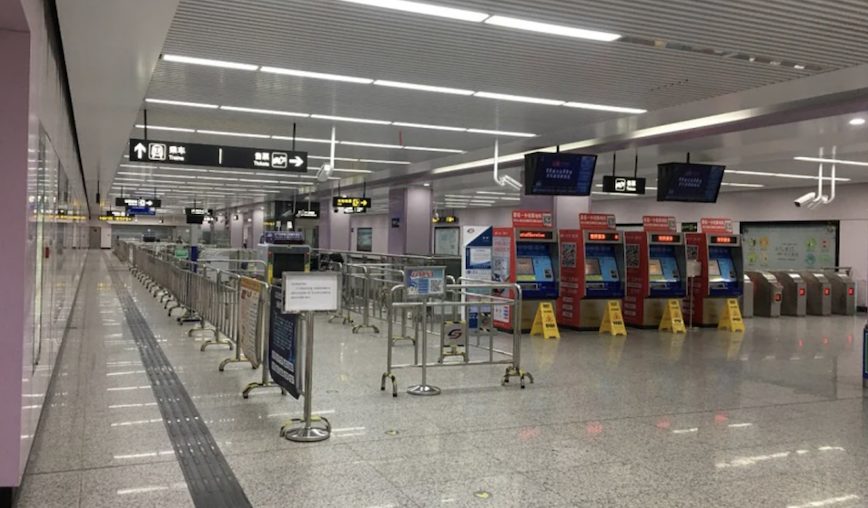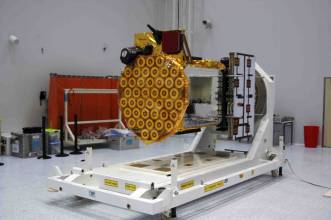China Mobile Suzhou and Huawei have verified 5G indoor positioning capability in metro transport scenarios in Suzhou, China. The verification showed that, even with Pico Remote Radio Units (pRRUs) hidden, a positioning precision of 3 to 5 m can be achieved in 90% of the platform and hall areas. Verificiation of 5G indoor positioning on live networks in the world, provides valuable experience for the commercial growth of 5G positioning in vertical industries.
A Huawei LampSite base station consists of a baseband unit (BBU), pRRU, and RRU HUB (RRU HUB).
[Image: Line 4 of Suzhou Metro, courtesy Huawei]
Indoor location-based services are in high demand for vertical applications, such as indoor navigation, asset tracking, geofencing, logistics management, and personnel management, which reflects the huge market space of indoor positioning. Currently, indoor positioning technologies are of great variety and most of them need to be deployed and maintained individually, producing high end-to-end costs. As a part of the continuous evolution of 5G, positioning has been added to 3GPP Release 16 finalized in mid 2020 to realize indoor positioning by leveraging the ultra-high signal resolution empowered by 5G’s high bandwidth, multi-point measurements, and multi-access edge computing (MEC) deployment.
A Qualcomm blog post about Release 16 states that it “supports multi-/single-cell and device-based positioning, defining a new positioning reference signal (PRS) used by various 5G positioning techniques such as roundtrip time (RTT), angle of arrival/departure (AoA/AoD), and time difference of arrival (TDOA). RTT- based positioning removes the requirement of tight network timing synchronization across nodes (as needed in legacy techniques such as TDOA) and offers additional flexibility in network deployment and maintenance. These techniques are designed to meet initial 5G requirements of 3 and 10 meters for indoor and outdoor use cases, respectively. In Release 17, precise indoor positioning functionality will bring sub-meter accuracy for industrial IoT use cases.”
The Suzhou verification was based on Huawei’s 5G digital indoor solution LampSite and MEC solution. The LampSite units measure the radio signals of 5G devices and work with MEC to analyze the signal characteristics. Based on the results of the analysis, algorithms are used to precisely locate 5G devices.






